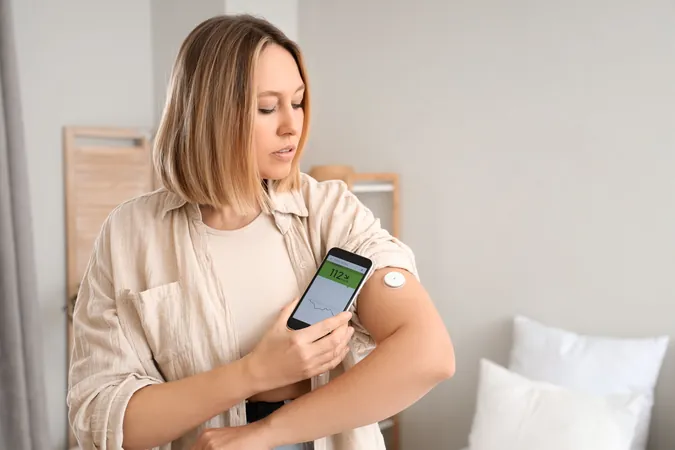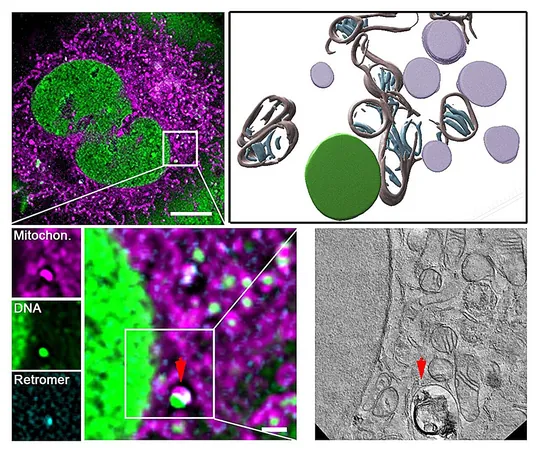
Unlocking Diabetes Management: How Continuous Glucose Monitors Transform Patient Care
2025-04-02
Author: Nur
In an era where technology profoundly influences healthcare, Continuous Glucose Monitoring (CGM) devices are reshaping the landscape of diabetes management. These innovative devices deliver real-time insights into blood sugar levels, allowing patients to take proactive steps in managing their health. According to Lindsey Miller, PharmD, a clinical assistant professor of pharmacy practice at the University of Mississippi, pharmacists are playing a pivotal role in helping patients leverage these advanced technologies to enhance their diabetes care.
The integration of CGMs into pharmacy practice opens up new avenues for patient support. Pharmacists can offer vital education and technical assistance to help patients navigate the complexities of these devices and overcome common barriers to access. By facilitating understanding and promoting collaborative healthcare practices, pharmacists empower patients, enabling them to make informed decisions regarding their diabetes management.
Maximizing Pharmacy Workflow with CGMs
Miller emphasizes the potential for pharmacists to incorporate CGM education into their workflow effectively. Regardless of the practice setting, pharmacists often encounter patients with diabetes. For example, in community pharmacies, they can recommend CGM devices to healthcare providers or educate patients about the benefits of self-monitoring, which can significantly enhance their quality of life and diabetes management.
The Importance of Personalized Patient Education
For patients new to CGMs, Miller suggests a personalized approach is crucial. During the initial dispensing of a CGM device, pharmacists should take the time to guide patients through the application and setup process. Whether the device is applied to the arm or connected to a smartphone app, hands-on support can greatly alleviate any anxiety and enable patients to take full advantage of the technology. Continuous follow-up conversations are also essential to help patients interpret their data and make meaningful changes to their diabetes management.
Addressing Financial and Access Barriers
Despite the benefits, cost often poses a significant barrier to accessing CGM devices. Many insurance plans require specific conditions, such as being on an insulin regimen or experiencing hypoglycemic episodes, for coverage approval. Miller advocates for pharmacists to assist patients in understanding their health plan benefits and offer guidance in securing financial assistance when necessary. Furthermore, over-the-counter CGM options are emerging, simplifying access for patients who may not qualify for insurance coverage.
Advancing Patient Education and Technology Literacy
Miller also highlights the necessity of pharmacists staying informed about CGM technologies and their compatibility with various health devices. This knowledge equips pharmacists to guide patients effectively through their tech challenges. By dedicating time to help patients understand the features and benefits of CGMs, pharmacists can enhance their ability to manage diabetes.
Collaboration with Healthcare Providers
Pharmacists have the unique opportunity to work alongside healthcare professionals to improve access to CGMs. By identifying patients in need through daily interactions, pharmacists can recommend CGM solutions to primary care providers or endocrinologists, thus enhancing patient access to this critical technology. Additionally, pharmacies can implement remote monitoring programs, providing continuous support to patients between doctor visits.
Demonstrating the Value of CGMs
Clinical studies have illuminated the significant benefits of CGMs. These devices not only help in reducing HbA1c levels but also contribute to improving the overall quality of life for patients. Anecdotal evidence underscores the emotional and psychological boosts patients experience—many share their success stories with pharmacists, showcasing their progress with glucose readings. This inspires confidence and promotes further engagement in diabetes management, leading to healthier lifestyle choices.
Educational Resources for Pharmacists
To help pharmacists enhance their skills in CGM technology, resources like the American Pharmacists Association’s newly launched CGM certificate training program offer comprehensive education. This program covers critical aspects of CGM implementation in patient care, including workflow integration and billing strategies. With 12 hours of training, pharmacists can deepen their understanding and become more effective advocates for their patients.
Conclusion: The Future of Diabetes Management is Now
As the healthcare landscape continues to evolve, CGM devices are at the forefront of transforming diabetes management. They empower patients and position pharmacists as invaluable partners in the journey toward better health. By embracing this technology and advocating for patient access, pharmacists can lead the charge in improving overall diabetes care and enhancing patient outcomes.
Stay tuned for more breakthroughs in diabetes technology and how pharmacy practice can shape the future of patient care!


 Brasil (PT)
Brasil (PT)
 Canada (EN)
Canada (EN)
 Chile (ES)
Chile (ES)
 Česko (CS)
Česko (CS)
 대한민국 (KO)
대한민국 (KO)
 España (ES)
España (ES)
 France (FR)
France (FR)
 Hong Kong (EN)
Hong Kong (EN)
 Italia (IT)
Italia (IT)
 日本 (JA)
日本 (JA)
 Magyarország (HU)
Magyarország (HU)
 Norge (NO)
Norge (NO)
 Polska (PL)
Polska (PL)
 Schweiz (DE)
Schweiz (DE)
 Singapore (EN)
Singapore (EN)
 Sverige (SV)
Sverige (SV)
 Suomi (FI)
Suomi (FI)
 Türkiye (TR)
Türkiye (TR)
 الإمارات العربية المتحدة (AR)
الإمارات العربية المتحدة (AR)